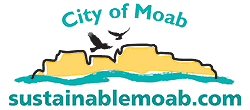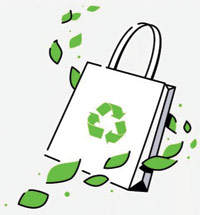Moab is an anchor community in the first-of-its-kind Community Renewable Energy Agency. Including 17 other Utah communities, the Agency is approaching key milestones in 2023 that will establish a path toward procuring renewable energy by 2030. The first milestone comes in March with a program application to the Utah Public Service Commission. The Commission could provide a decision as early as June or as late as September. Then, local governments, like ours, will have an opportunity to finalize participation in the program, paving the way to acquiring 100% renewable energy.
With these momentous milestones in the works, largely the accomplishments of the Program Design Committee, other committees are also working behind the scenes to make it all possible. The Low-income Plan Committee is supporting the development of plans to reach out to community members and organizations with information on the program in 2023. Additionally, the Board voted to implement strategies to make the program accessible to as many people as possible. These strategies include a monthly bill credit and a termination fee waiver for future low-income customers participating in the Program. The Board also passed a resolution supporting a future online donation platform which would provide additional low-income support. 
The Communications Committee is also releasing updates via a newsletter and social media. As the program nears submission to the Public Service Commission, the committee has focused on hiring a consultant to assist with outreach in participating communities with detailed information on the final program and options available to residents and businesses.
More updates will be coming out in the new year as the implementation of the program unfolds. You can stay up-to-date and learn more about the Community Renewable Energy Program by:
Visiting utah100communities.org or reviewing Frequently Asked Questions;
Subscribing to the Agency’s newsletter;
Following on Facebook, at facebook.com/utah100communities;
Following on Instagram, @utah100communities;
Subscribing to the YouTube channel;
Subscribing to email notifications from the Utah Public Meeting Notice website.
Attending upcoming board meetings online: https://global.gotomeeting.com/join/890138285
Monday, February 6 at 1pm
Monday, March 6 at 1pm
|
Recently, many products have begun to include evocative labels that claim to be “eco-friendly”, “made from recycled material”, or some equally similar stamp of environmentally-focused PR. Yet, when you consider the authenticity of such claims, is the product you are purchasing truly a benefit to the environment or is it simply a clever ploy to sell a product to a generation that is more mindful of their impact?
Consumers, despite known environmental benefits such as reducing their carbon footprint and supporting circular economies, may be hesitant to purchase such products. This may be due to higher upfront costs, limited accessibility in their community, and a loss of convenience in life. Let’s take a quick dive on what these cons are and how to address them:
1.Higher Upfront Costs: Before purchasing a product, nearly all buyers look for the price tag and may experience sticker shock. For example, a consumer may consider buying a reusable water bottle but falter when they see $19.99 versus a $1.99 single-use water bottle which may feel easier on the wallet. This higher upfront cost may discourage a shopper from purchasing the reusable water bottle, despite an eventual cost savings over time. The same can be said for other similar and more expensive purchases such as energy-efficient appliances, countertop composters, and ethical apparel.
2. Limited Access: On the flip side of higher costs, eco-friendly products can easily have the issue of accessibility.
Due to the geographically-isolated nature of Moab’s location, the physical ability to purchase these items may be restricted. With limited retail options, access to sustainable products can be difficult which prevents a potential consumer from being able to purchase an item in the first place. Transportation costs to companies also factor into this issue. If the cost of delivering these products to an isolated market outweighs the guarantee of profit, then the product may never land on retail shelves. Through the demand of more sustainable products in stores and by purposefully purchasing fewer single-use products, this encourages businesses to stock the shelves with more popular items (aka eco-friendly ones) that provide a higher profit.
3. Inconvenience: The most common concern of switching to sustainable products is the loss of inconvenience. By replacing single-use items with more sustainable products, the buyer immediately feels a loss of convenience, whether intended or not. Eco-friendly products typically take more time to use. A water bottle must be filled first, a reusable coffee pod must be emptied and cleaned, or a bamboo utensil set must be carried to an eatery and washed afterwards. Each of these actions, while providing benefits to the environment, ultimately take away the easiness of certain aspects of life. However, all good things come with a little hard work. By introducing the time and work needed bit by bit, you can teach yourself to use these products as if they were second nature. If you introduce major changes to your routine too quickly, failure can follow. Consider the tale of the Tortoise and the Hare and how the lesson can apply in this situation.
After understanding the challenges that can be faced when it comes to integrating sustainable products into your daily routine, a sense of pride can be taken in your efforts to preserve and maybe even heal the environment around Moab and beyond.

|